|
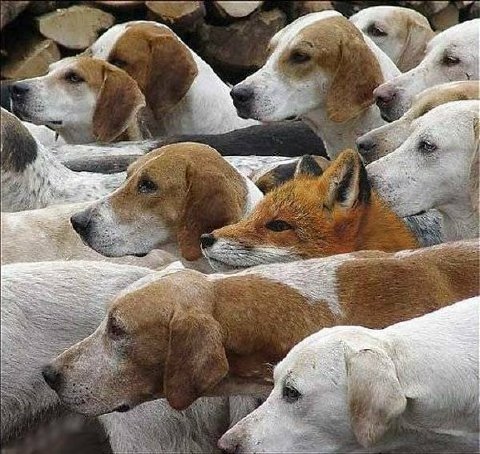
(You may have to look
carefully at above picture, until you see it!)
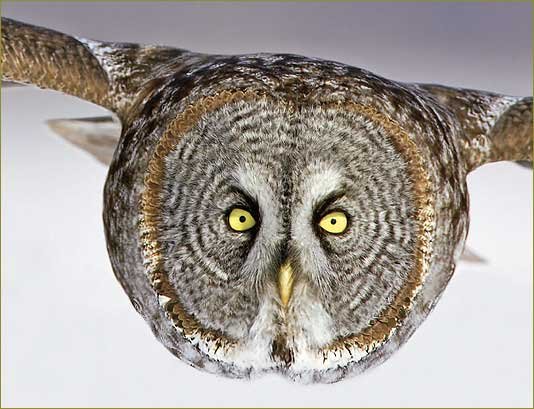
GRAND PRIZE
Kim Steininger
Chadds Ford, Pennsylvania
"I took this picture
right before I ducked," says Steininger. On a
bird-watching trip in Ontario, Canada, last winter, the
network administrator noticed that one of the great gray owls
she was photographing was staring back at her. "I didn't
think anything of it until it started flying at me," she
says. Before getting out of the way, Steininger captured this
digital photo with a 500mm telephoto lens.
MORE THAN 4,000 images were submitted during the past year to
National Wildlife's 35th annual photo contest. Selected by the
editors on the basis of originality and execution, the winners
appear here. To view more contest submissions and learn how to
enter next year's competition, click on "Photo Zone"
at the top of this page.

Victor S. Lamoureux
Vestal, New York
Lamoureux, a high school
biology teacher, knows frogs. So when he went frog-watching
with his son and niece at a nearby pond and spotted two male
green frogs clinging to each other, he knew it was something
unusual. "Then my son said, Dad, Dad, look-there are
three frogs!" says Lamoureux. As it turned out, there
actually were four: three males in a conga line behind one
put-upon female. Lamoureux raced back to his house with the
kids in tow, and returned to take this digital image with a
180mm macro lens.

Ray G. Foster
Salem, Oregon
Ducks, not hummingbirds, were
on Fosters mind when he settled down behind a photo blind near
a pond in southern Oregon. "I wasnt having any duck luck
so I decided to focus on this hummingbird," says the
paper mill worker. He used a 300mm lens to take this unusual
photo of a rufous hummingbird collecting fibers from a
cattail-presumably to build a nest.

Kevin Doxstater
Port Orange, Florida
While photographing water
birds in Floridas Fort DeSoto Park, Doxstater spotted a
long-billed curlew hundreds of feet away in the middle of a
tidal marsh. Doxstater took off his socks and shoes and slowly
waded into the marsh, making digital photos along the way
using a 500mm lens and a 1.4x teleconverter. In the end, he
was rewarded with this close-up shot of the curlew in the
middle of a crab lunch.
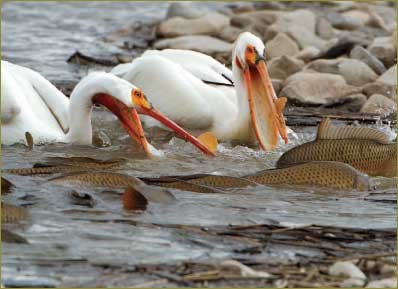
Craig Hilton
Lakewood, Colorado
On a trip to Utahs Bear River,
Hilton was surprised to see a pair of hungry American white
pelicans herding several carp-bigger than the birds bills-into
the shallows. Hilton captured the moment with a digital camera
and a 200-400mm zoom lens. "What I love about the picture
is the expression on the pelicans faces. You know theyre
having a good time," he says.

Hira Punjabi
Maharashtra, India
On a frigid winter morning at
Indias Tal Chappar animal sanctuary, Punjabi came upon two
male blackbucks battling for dominance against a glowing
backdrop of dust and light. The graceful animals, once
overhunted, can now be seen in herds throughout India. Punjabi
made the photograph with a 500mm telephoto lens.
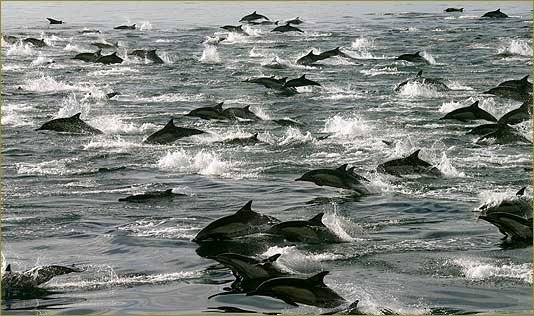
Bill Yeaton
Dover, New Hampshire
Yeaton was working as a
physician on a small cruise ship in Mexicos Sea of Corts when,
at breakfast one morning, the passengers noticed that several
dolphins were swimming alongside the boat. "Then more and
more dolphins came up, until there were hundreds surrounding
us," says Yeaton. He took this photo with a digital
camera and a 28-300mm zoom lens.

James Shadle
Valrico, Florida
Last spring, Shadle headed to
Tampa Bay to photograph a spoonbill rookery there. The
salesman jumped out of his boat, lowered his tripod and, using
a digital camera and a 600mm lens, photographed this roseate
spoonbill just as it came in for a landing.
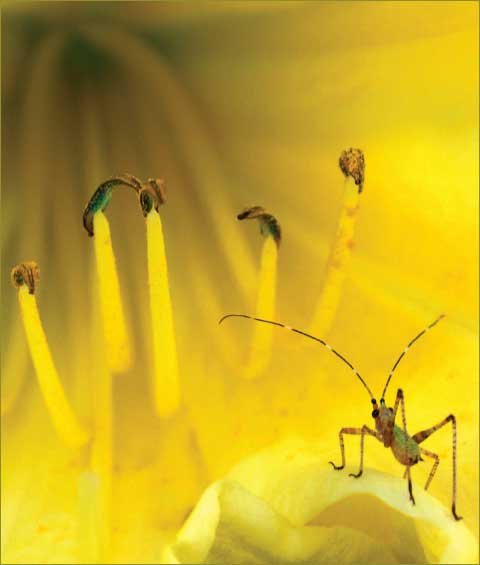
Christopher C. Barry
Huntington, West Virginia
Perched on a bright yellow
lily, a Scudderia katydid nymph caught Barrys eye as he
strolled through a Huntington public park. Using a digital
camera with a 38-76mm zoom lens, Barry captured a close-up of
the insect looking like it climbed the flower just to enjoy
the view.

Joshua D. Henson
Coeur Alene, Idaho
One night during a
late-October camping trip in Yellowstone, Henson was driven
out of his tent and into his car by the cold. The next
morning, the freezing temperatures awoke the seasonal park
ranger before dawn-just in time for him to capture this
frosty, foggy field at sunrise. He used a 28-80mm lens to make
the photo.

Adam Schallau
Ranchos de Taos, New Mexico
Scouting for wildflowers near
Crested Butte, Colorado, Schallau hit a gold mine: a field of
mules ear against a backdrop of the Anthracite Range and a
glorious sunset. To capture the golden moment, the retail
account manager used a 12-24mm zoom lens and a tripod to hold
his digital camera steady for the quarter-second exposure.

Jerry Horowitz
Marlboro, New Jersey
Horowitz photographed this
brown bear on Alaska's Kodiak Island. The retiree used a
70-200mm zoom lens.
(Back)
|